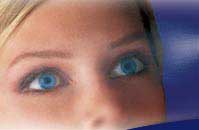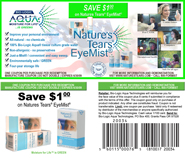
June 21, 2011
Ultraviolet Light, UV Radiation and Skin Care
The UVA and UVB components of sunlight may cause skin dehydration, sunburn, collagen damage and DNA damage
Sunshine is a wonderful thing. In plants, it stimulates green chlorophyll to produce free oxygen, enabling us to breathe. Sunshine invigorates, energizes and causes the skin to produce Vitamin D, the "Sunshine Vitamin." Of course, sunshine can also give you a painful sunburn.
The primary "bad factor" in sunlight is ultraviolet (UV) light. UV is the component of sunlight that causes skin dehydration, sunburn, collagen damage, DNA damage and skin cancers such as melanoma. Education about UV light, combined with a few simple skin care precautions, can significantly affect skin (and eye) health.
Ultraviolet light is light with a wavelength just a little too short to fall within the visible spectrum (100 to 400 nanometers). Compare this to infrared light, which has a wavelength just a little too long to fall within in visible spectrum (700 to 3,000 nanometers).
Facts about UV light:
- Earth's ozone layer filters out 98% of UV rays. Of the UV radiation that gets through, 98% is Ultraviolet-A (UVA).
- (UVA) has a wavelength of 400 to 315 nanometers (visible violet light has a wavelength of 400 to 500 nanometers).
- UVA does not cause sunburn but can cause skin drying, collagen damage and rapid aging.
- UVB has a wavelength of 315 to 280 nanometers.
- UVB causes sunburn and DNA damage that can lead to skin cancers such as melanoma.
- On the positive side, UVB stimulates the production of Vitamin D and melanin (melanin helps block UV rays).
- UVC has a wavelength of 280 to 100 nanometers and is used to kill bacteria.
- UVC can be extremely damaging to skin. You are most likely to encounter UVC at high elevations and in ozone depleted areas such as Antarctica.
Minimizing UV exposure:
- Well hydrated skin, containing adequate water, is more resistant to the harmful effects of UVA and UVB than dehydrated skin (dry skin), with not enough water. Dry air, air pollution, forced-air heating and cooling and insulated walls and windows also contribute to dry skin.
- Sunscreen, which blocks UV light, is recommended for facial skin anytime you go outside in sunlight, no matter what the season.
- Sunscreen is most effective if the skin underneath is well hydrated. In addition to blocking UV rays, the lotion in sunscreen acts as a sealer to help the skin retain water.
- The darker your skin, the higher the melanin component, the more resistant your skin is to UV rays.
- As a sunburn heals, it temporarily stimulates melanin production (tanning).
- Natural fabrics with a tight weave are effective in blocking UV rays. As with sunscreens, different fabrics and weaves have specific SPFs (solar protection factors).
- A hat, sunglasses and long sleeves also offer important UV protection in sunlight.
To make sure your skin (and eyes) contain adequate moisture, drink at least eight glasses of pure water (in addition to coffee, tea, soda or juice) per day. Also, bathe often, keep your windows open when possible. Finally, for dry skin and dry eyes, get into a daily habit of frequent facial and eye misting with Nature's Tears EyeMist or Nature's Mist Face of the Water, hand-held water therapy devices from Bio-Logic Aqua Research.
Source:
Wikipedia ("Ultraviolet Light")
"Ultraviolet (UV) Protective Clothing," Sharon Kleyne Hour - Power of Water. June 23, 2008
"Sun Safety to Prevent melanoma," Sharon Kleyne Hour - Power of Water. August 31, 2009
http://www.sharonkleynehour.com/Archive2009/Sun_Safety_to_Prevent_Melanoma.php









